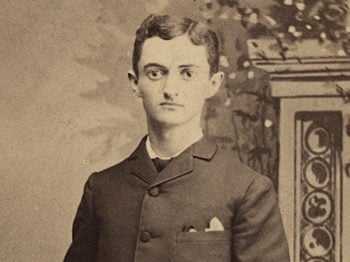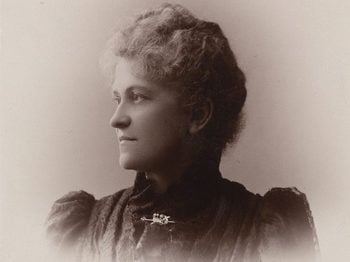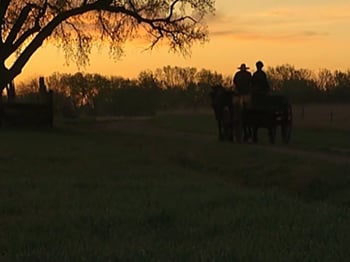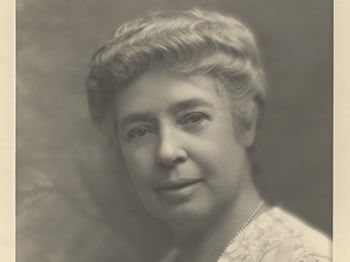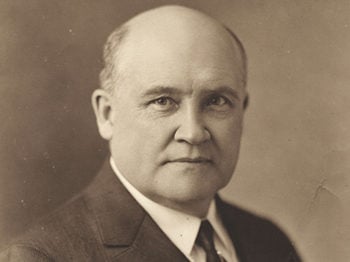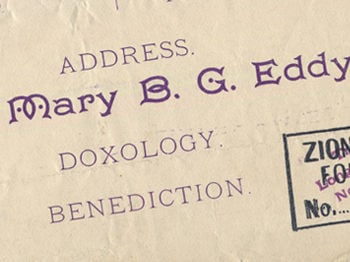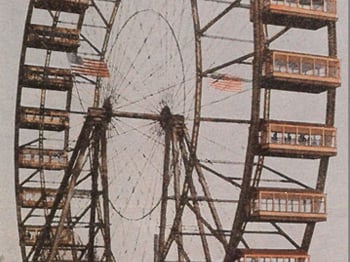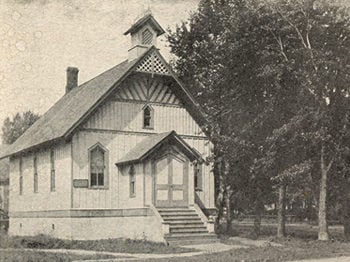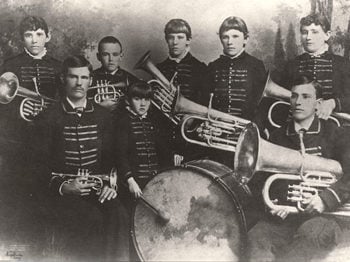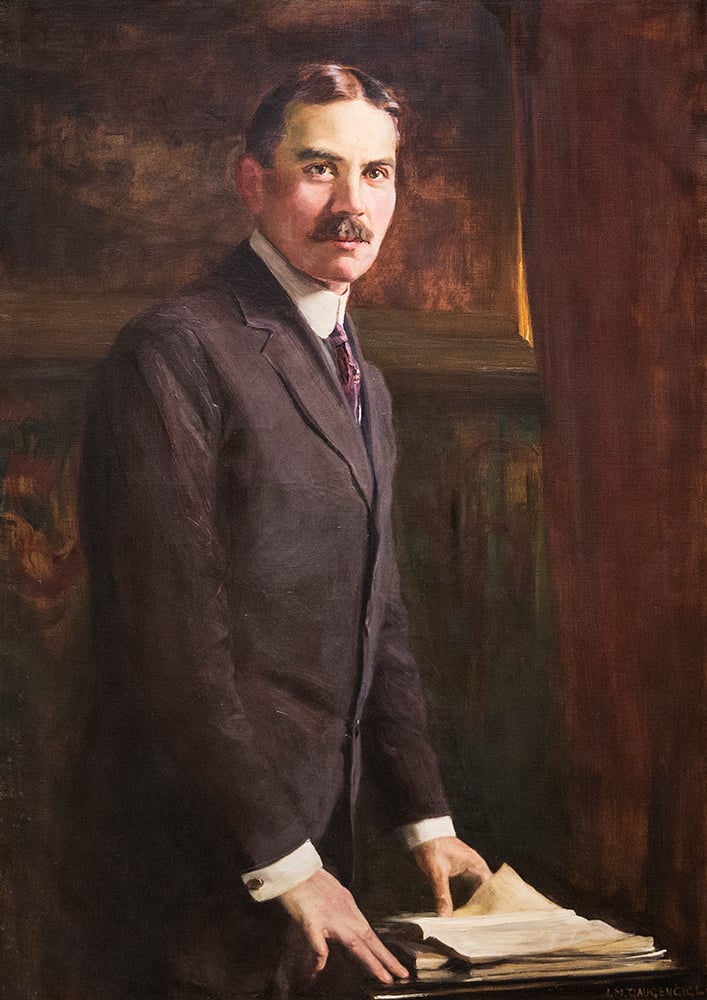
AT AN EARLY AGE Alfred Farlow’s parents, William and Paulina Farlow, instilled sound principles in the heart of their receptive son — to return good for evil, not to covet anything belonging to his neighbor, to think good thoughts, and to be fair and just. In later life, he wrote Judge Hanna, “My beginning was such that I could not deviate from what I thought was right.” Such teachings helped to prepare him for the strenuous years of service to Mrs. Eddy and the Cause of Christian Science as the first Committee on Publication for The Mother Church.
His father and mother had a prosperous farm in Orange Township, Knox County, Illinois. During the winter the father taught school and for sixteen years served as assessor for the town of Orange. He was an enthusiastic class leader in the Methodist church for thirty years. The family of eight children had many diversions at home — games, dramatics, music — as well as sharing household duties. Their father, a singing teacher in his youth, encouraged all of them to learn to play some musical instrument.
Mr. Farlow, wishing to give his children better educational advantages, sold the farm in 1872 and entered into a mercantile business in the town of Orange. Unsuspected dishonesty among his associates brought the business into serious difficulties and he was forced to sell everything. Alfred, the eldest, had graduated from Orange High School with honors and had entered a Lutheran College at Knoxville, Illinois, where he continued to excel as student, speaker, organizer, and athlete. He left college to help support the family but tutored evenings with Col. John W. McLenahan, a scholar and veteran of the Civil War. The Farlow family moved to Beatrice, Nebraska, in 1879 and resumed farming. While in Orange, Alfred had worked as a book salesman, as clerk in a book store, and at teaching. On coming to Beatrice, he became a teacher and his efficient work became well known in the area. Although only 23 years old he was offered the nomination for the office of County Superintendent of Schools. He declined the nomination because the incumbent of that office was a cripple and he did not think it would be right or honorable to win the place at the expense of this man’s defeat for Alfred was quite sure he himself would be elected. Another reason was that the party [Democratic] which had approached him was not his own.
While he was considering his next work, he and his brother William discovered a quantity of broom brush and decided to go into the manufacturing of brooms. They had attempted to start a town band at Beatrice, but finding little response, they organized the Farlow Family Band which gave concerts in much of the Midwest until the late 1880s. Public concerts were given up when beginning the practice of Christian Science, but the family continued to play together until 1908, giving occasional private programs in their own home for friends.
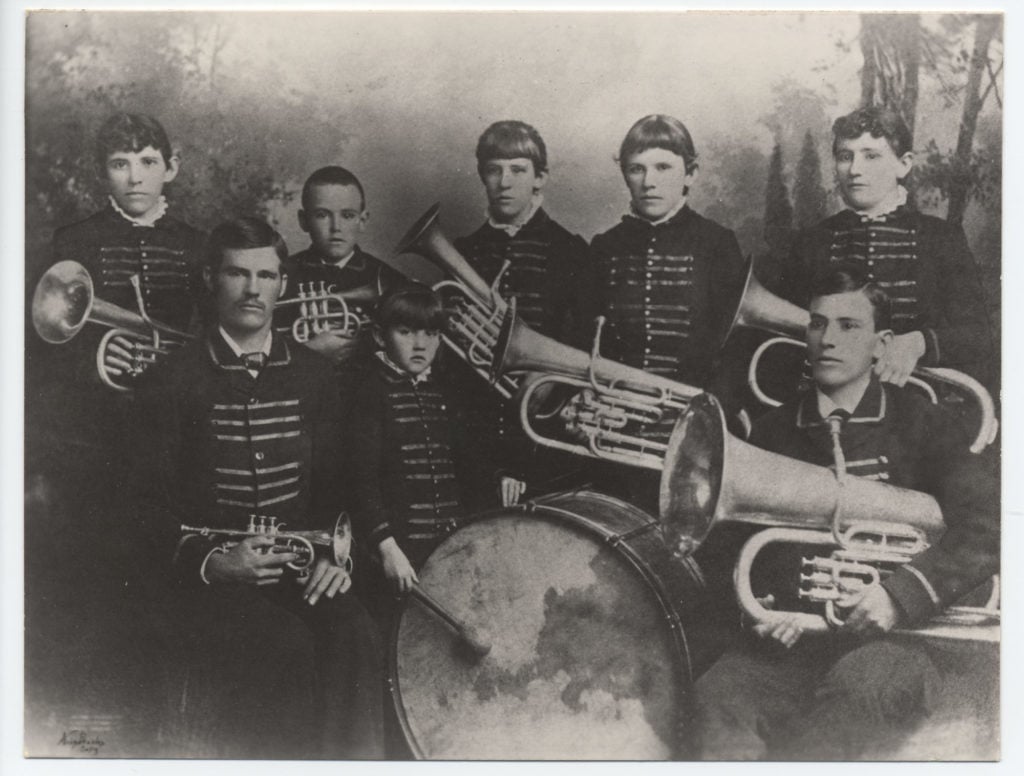
In 1885, six years after moving to Beatrice, Mrs. Farlow was healed by Christian Science and the entire family accepted the new teaching with almost biblical zeal. Four members had Primary class in May 1886 with Mrs. Janet Colman, who had come to Beatrice to teach Christian Science after completing Normal class with Mrs. Eddy in February 1885. The father and mother entered Mrs. Colman’s November 1886 class. Alfred, who was in the May class, had long sought a work which would make his life one of effective service. This he found in Christian Science.
He and his brother, William, entered Mrs. Eddy’s Primary class on May 2, 1887, and at Mrs. Eddy’s suggestion Alfred returned for her Normal class beginning in October of the same year. He and William sold their broom factory and turned entirely to the practice of Christian Science. They travelled in Illinois, Nebraska, and Colorado, giving talks in small towns to friendly groups; Alfred also taught Christian Science to a number of small classes. The brothers settled in Topeka, Kansas, in 1888, and later that year Alfred organized the Kansas Christian Science Institute. William and his sister Sarah had Primary class with Mrs. Eddy in 1889, and in that year William became associated with Alfred in the Institute. Later, when they moved to Kansas City, Sarah was also associated with the Institute.
Alfred felt the need of greater opportunities for service and Mrs. Eddy advised him to move to a larger city. He selected Kansas City and about mid-1893 he began his work in that city and was advertising the Kansas Christian Science Institute in The Christian Science Journal for July 1893. The family joined Alfred and William and were comfortably settled in an attractive home in Roanoke, a suburb of Kansas City.
Soon after moving to Kansas City, they organized a Mission Church of Christian Science near the Farlow home, opening services with seventeen members, most of them the Farlow family. Within a relatively short time the membership was 601. Alfred was the pastor and during this time he went to Chicago as one of twelve chosen by Mrs. Eddy to deliver addresses on September 20, 1893, during the Christian Science Congress of the World’s Parliament of Religions at the Columbian Exposition. Alfred Farlow’s address was on “The Brotherhood of Man.”
Later the Mission Church was invited to unite with the First Church of Christ, Scientist, Kansas City, and Alfred was elected First Reader. He did much to further plans and funds for the beautiful First Church edifice at 9th and Forest Streets, Kansas City, which was dedicated in 1898 on the eve of Alfred’s departure for Boston.
When Alfred Farlow received a call on January 11 , 1899, from Mrs. Eddy to come to Boston, he was not only active with church and Institute but he had established on his own initiative wide connections with the regional press through his articles refuting false statements about Mrs. Eddy and Christian Science, which had appeared in these papers. Mrs. Eddy had kept in touch with him since 1887, date of his first class with her, and she sent him from time to time words of encouragement or admonition, as the occasion required. His loyalty to Mrs. Eddy was complete. and he came to Boston prepared to do whatever she wished him to do.
He had a natural aptitude for the highest type of promotional work — that which educates while it attracts — and it was not long before he was made Committee on Publication in January 1900. When he arrived in Boston he met a hostile and derisive press, and a seething mass of printed denunciations of Mrs. Eddy. The personal life of Mrs. Eddy, her lineage, family, education, marriage were favorite targets of attack. Ministers denounced Christian Science from the pulpit, and others declared her writings to have been derived from P. P. Quimby, a magnetic healer in Maine in the nineteenth century.
Mrs. Eddy cautioned Alfred to be moderate in his replies to these charges and insisted that every answer must go out from a sense of love, not hate. During these early years few days passed without guiding messages to him from Mrs. Eddy in her own handwriting, or some recommendation sent through one of her secretaries. Her knowledge of the press as revealed in this correspondence was prodigious and she often took time to direct Alfred to the exact place to send a reply and to give him specific points to be made.
Alfred Farlow was an apt disciple and within a few years he was able to shoulder full responsibility for his office. Compassionate in nature, he approached the press with a sense that many erroneous statements were due to misapprehension rather than to ill will. The purpose of a newspaper, he held, is to put facts before its readers, and this is not accomplished until the truth is stated. He realized that all erroneous statements regarding Mrs. Eddy and Christian Science must be denied in order to stop the growth of prejudice in the public mind; and he understood that articles sent to the press must be right in tone, sound in argument, and correct in narration. His warm and earnest personality — well seasoned with gentle irony — did much to disarm opposition.
Mrs. Eddy sent him many articles written by herself in answer to specific challenges, articles which he placed in the press under her direction, following through to the final proof to make sure there were no changes made in the text. Alfred Farlow was an able organizer and set up high standards of procedure for his organization. One of his most important contributions to the Christian Science movement was the establishment of a network of Assistant Committees on Publication in the larger cities and towns across the United States and a few in Canada and Europe.
When he resigned his post as Committee on Publication in the Spring of 1914, he was a welcome visitor in hundreds of editorial offices throughout the country and the valued friend of thousands of newspaper men — in sharp contrast to his reception in 1899. His gentle demand for justice and his fastidious maintenance of accuracy contributed much to their confidence in him.
Without question his appearance was also a business asset. A contemporary described him: “In personal appearance he might be called handsome. His hair is dark almost to blackness; his mustache is light brown. In stature he is medium and athletic. His tastes are refined to modesty and he is nervously active but always easy.” And elsewhere he was characterized as being without disturbance of mind even in emergencies.
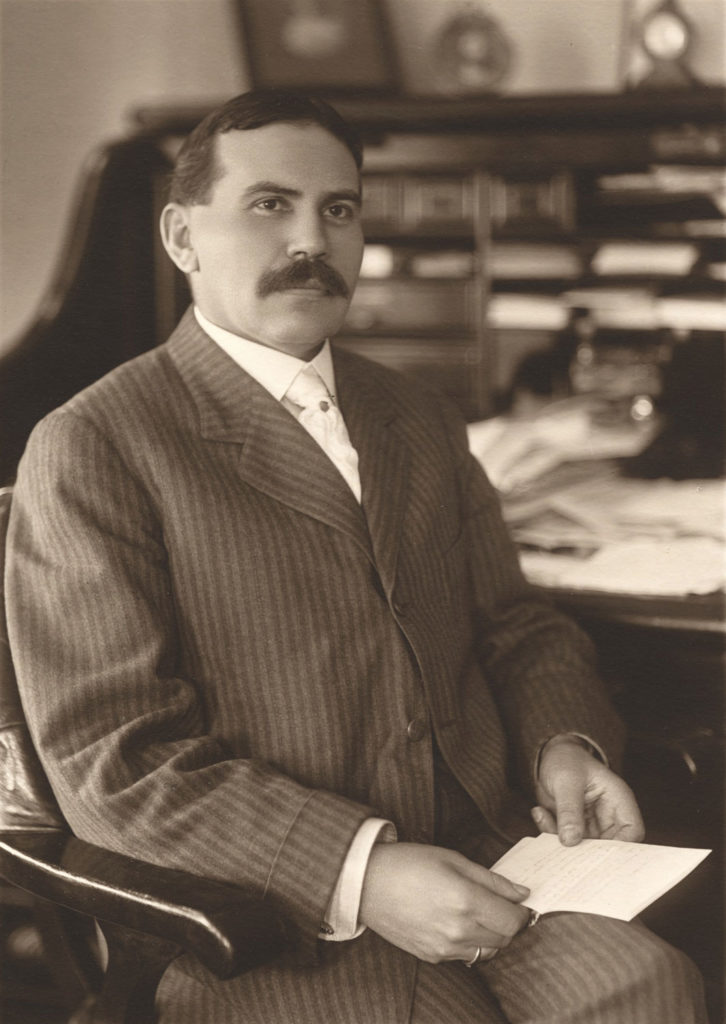
On his retirement the Boston Post wrote in its issue of March 29, 1914: “The retirement of Alfred Farlow, for 26 years [1888-1914] prominent in the affairs of the Christian Science organization, removed a forceful and winning personality from active service. He was a powerful force in the councils of the church. His influence on the outside world was stronger than even Christian Scientists realize.” Alfred Farlow was a voluminous writer for the daily press and national periodicals. Several articles by him challenging critical issues of the movement, published by The Christian Science Publishing Society in pamphlet form, may be read at Longyear.
During his years in Boston the Farlow family shared a home on Waban Hill, not far from Mrs. Eddy’s Chestnut Hill home. Alfred’s mother was a friend of Mrs. Eddy, and often called with her daughter Sarah, bringing some small gift from her kitchen or garden. Sarah and William were active in the practice in Boston. In 1904, Alfred was President of The Mother Church. He continued his practice during his Boston years also teaching classes and holding his Associations. His sister Margaret records in her biographical sketch of him that when he left Boston on his retirement from the Committee on Publication, he had one trunk filled with patients’ letters. The letters were fastened together in twos, the first being the application for help, the other, a letter received after healing. His mother and sisters joined him in Los Angeles, California, where he continued his work as healer and teacher from the day of his arrival there until his passing on September 10, 1919.
Sibyl Wilbur, author of The Life of Mary Baker Eddy, wrote of him: “He seemed to have complete selflessness, to be entirely without prejudice . . . a sanctity of purpose enveloped him, a garment worn very naturally and simply, without pious ostentation.” And his devoted sister Margaret summarized his character thus: “His was a constructive life building a character of monumental goodness, kindness, and wisdom.”
Notes
This article was originally published in the 1970 spring Quarterly News.
We are indebted to The Foundation, Charlestown, New Hampshire, for permission to consult and use material from its files on Alfred Farlow.
